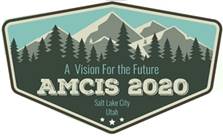Loading...
Abstract
The Centers for Disease Control and Prevention (CDC) has declared sleep deprivation (SD) a public health epidemic . SD is not only one of the leading causes of health problems, but it also negatively impacts performance (Chattu et al., 2019; Koslowsky and Babkoff, 1992). SD has been associated with accidents, disasters, and occupational errors that can arise from falling asleep when performing tasks or difficulty in carrying out tasks due to lack of sleep. SD in the U.S. workforce costs approximately $411 billion per year . SD can create hazardous outcomes in the workplace. Such hazards include safety hazards and psychosocial hazards (i.e., mental health and well-being) (Stephanidis et al., 2019). Hence, it is critical to detect sleepiness in the workplace to minimize or prevent these hazards. In this research, we are interested to utilize the eye-tracking approach to detect sleepiness of users of computer-based systems. We review the literature on the biological explanations of SD and eye-tracking metrics associated with SD and sleepiness. Our literature review suggests that saccadic eye movements (Fransson et al., 2000; Zils et al., 2005), eye blinks (Caffier et al., 2003), as well as pupil size and constrictions (Franzen et al., 2009; Russo et al., 2003; Wilhelm et al., 1998) can potentially be used to detect sleepiness of IS users. We plan to conduct an experiment to assess and validate these metrics in a computer-based environment using a variety of tasks including vigilance, monitoring, and reading comprehension tasks. We believe that our research can help to validate some theoretical explanations on sleep deprivation and eye-tracking metrics for detecting sleepiness of IS users. Our findings can be helpful in the workplace for detecting sleepiness of users executing mission- or business-critical tasks in a computer-based environment.
Recommended Citation
Roy, Debasis; Nah, Fiona; and Thimgan, Matthew, "Indicators of Sleepiness using Eye-Tracking" (2020). AMCIS 2020 TREOs. 84.
https://aisel.aisnet.org/treos_amcis2020/84
Abstract Only
When commenting on articles, please be friendly, welcoming, respectful and abide by the AIS eLibrary Discussion Thread Code of Conduct posted here.


